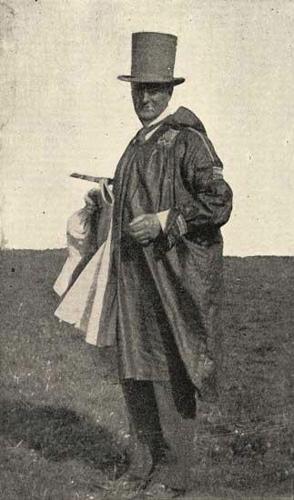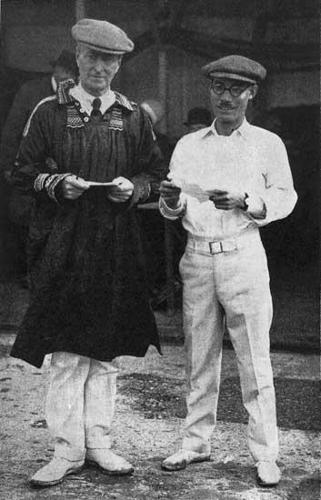Major W W Grantham – a biography
Background and military career
William Wilson Grantham was born on 7 January 1866 in South Norwood, Surrey. He was the eldest son of William and Emma Grantham and appears on the 1871 census living with his family in Croydon. The household comprised William Grantham (head, aged 35, a Lewes-born barrister at law), his wife Emma (aged 28) and four children: William Wilson (aged five), Emma L Grantham (aged three), Constance M Grantham (aged two) and Frederick William Grantham (aged eight months). Also noted on the census are four servants including a nurse and under nurse to look after the children.
By the time the 1881 census was taken, William was boarding at Harrow School and a few years later, in December 1885 he began his long association with The Militia (the fore-runner of the Territorial Force). Surviving service papers held at The National Archives show that between 16 December 1885 and 17 November 1888 he was a lieutenant (and latterly captain) with the Cambridgeshire Regimental Volunteers.
There is then a two and a half year lull in matters military but by 6 May 1891 William was with the 14th Middlesex Regiment Volunteers as a second lieutenant. He would remain with them until 31 March 1908 being promoted to lieutenant in May 1892 and captain in September 1900.
In the meantime he had also married Sybil de la Rue on 17 July 1897. In his booklet, “This and That in Chailey and Barcombe” Edwin Matthias quotes from Barcombe Parish Magazine for August 1897 which rejoices that:
Mr W Grantham has chosen as his wife one who has already made a favourable impression upon the people of Barcombe and wishes Bride and Bridegroom all happiness and prosperity, and congratulations to Sir William and Lady Grantham on their son’s marriage. In celebration Barcombe Place [purchased by William Wilson’s grandfather, George Grantham in 1839] opened its gates to offer welcome and hospitality to all. A temporary ballroom was erected for a ball on Aug 31st; entertainment of the school children on the 1st and a ball for tenants on the 2nd. The children were presented with Jubilee mugs by “Sir William and Lady Grantham on the marriage of Willie and Sybil”. A Ladies’ Band provided the music.

At the time the 1901 census was taken he was heading the household at 17 Cadogan Place, London. The couple had two children: William Ivor Grantham (aged two) and Myrtle Irene Grantham aged eight months. The house was also shared with eight domestic servants including a nurse and under nurse employed to look after Ivor and Myrtle. In time, William and Sybil would have five more sons and two more daughters.
For William, the Militia appears to have been a dedicated interest but a career with the military seems not to have been an option. Like his father before him he was earning good money as a barrister.
Between 1 April 1908 and 27 September 1911 he is noted as a captain at The Inns of Court OTC and from 28 September 1911 until 15 April 1913 as a captain in the Territorial Army on its unattached list. On 16 April 1913 he joined the 6th Royal Sussex Regiment as a captain and remained with them until 1922. Although he finished the war as a major, he appears not to have travelled overseas with the battalion. He would have been 48 years old when war was declared on Germany and was presumably too old for active service. Nevertheless, Chailey Parish Magazine published his name in its first published roll of honour in October 1914 and would continue to do so every month up until the final published roll call in July 1919.
Stoolball
Major Grantham appears to have almost single-handedly revived the sport of stoolball during the First World War. The following extract is from the Society of American Baseball Research Examiner, Number 11.
Major Grantham was serving on the Military Tribunal. His eldest son had been badly wounded in France, and the Major was moved to provide some sport for the “battered heroes of the war in our military hospitals”. Cricket and tennis were deemed to strenuous for those who had lost limbs or otherwise handicapped; stoolball seemed to be the ideal game. A seminal match was played that year on the Sussex County Cricket Ground, between soldiers from the Pavilion Hospital “damaged by wounds” and a team of ancient lawyers, including Major Grantham, “damaged by age”. The soldiers won.
He also brought the game closer to home and there are a number of reports in local Sussex papers of recovering soldiers at Chailey playing games of stoolball. On 24 June 1917 The Sussex Express reported a game at “… Balneath Manor, the residence of Major W W Grantham, between officers of the Royal Flying Corps from Brook House, the new convalescent Hospital, and a team from Beechlands Convalescent Hospital. Those from Brook House were easy winners. Needless to say, Mrs Grantham entertained the company present to tea.”
According to the East Sussex News, published five days later, The Royal Flying Corps officers were easy winners by 50 runs. Major Grantham for his part appears to have taken his revived game on a tour of the county; in September 1917 there is a report of a match between Major Grantham’s team and Miss Norton’s team from Ditchling Red Cross Hospital.

During the 10 years after WWI, Major W W Grantham organised, with the permission of the MCC Committee, a series of annual games at Lord’s Cricket Ground with the last game on Saturday 24 September 1927 played between Major Grantham’s Own XI and the Japanese Embassy; Major Grantham’s team won by 53 runs.
In 1919 Grantham published Stoolball Illustrated And How To Play It. In 1923 he formed the Stoolball Association for Great Britain and was instrumental in a phenomenal upsurge in the popularity of stoolball after WWI. In 1927 there were over 1000 clubs playing stoolball. The Stoolball Association for Great Britain ceased to function in 1942, possibly due to WWII and the death of Major W W Grantham, and was not replaced until the founding of the National Stoolball Association (now Stoolball England) in 1979.
Grantham’s legacy
On 1 January 1922, William wrote to the War office from his chambers at 6 Crown Office Row, Temple, London. “Dear Sir”, he began, “… I was recently informed that I am now entitled to the Territorial Decoration as I have been an efficient volunteer and/or Territorial since, and including 1884. I received the VD in the spring of 1907 and am told that my War Service from 4 August 1914 to November 1919 (ie five years and three months) counts double service towards the 20 years service for the TD.”
The following month he received what must have been a disappointing reply. “… as you have not completed the necessary 40 years qualifying service it is regretted that you are ineligible for the Territorial Decoration.” [He’d completed 37 years and 11 days]
William Wilson Grantham died on 18 Feb 1942. There are a number of family papers lodged at The East Sussex records office at Lewes and also what is known as the “Grantham Collection of Number Ones” at the Institute of Education, University of London. According to the university, the collection “consists of the first issues of a variety of journals on all subjects, first published in the late 19th and early 20th centuries. It was put together by Major William Wilson Grantham (1866-1942), at one time Deputy Chairman of the London County Council, and deposited at County Hall in 1933; it then passed to the Institute of Education, along with other materials from the Inner London Education Authority, in 1990.”
Sybil Grantham died in 1952. In her will she left a plot of land known as Hoggs Mead upon which she desired houses to be built for elderly gentlewomen in distressed circumstances. The flats were duly built and today Grantham Close and Nym Close opposite it provide housing for 35 pensioners.
As previously mentioned, William Wilson’s son Ivor also served his King and Country during the First World War. His brother, Frederick William Grantham and Frederick’s son Hugo Frederick Grantham were both killed in action during the First World War. Frederick was killed in action near Richebourg L’Avoue on 9 May 1915. Hugo was killed at Gallipoli a few weeks later on 28 June.
Sources and Acknowledgements
This biography was written and researched by Paul Nixon, and is used with his permission. These are his sources and acknowledgements:
- 1871 Census of England and Wales
- 1881 Census of England and Wales
- 1901 Census of England and Wales
- Chailey Parish Magazine
- Burke’s Peerage, circa 1952
- William Grantham’s partial service record exists at The National Archives in Kew, London; ref: WO 374/28666
- Dave Grantham in New Zealand for supplying background information on William Ivor and William Wilson Grantham
- This and That in Chailey and Barcombe by Edwin Matthias, 1994
- Chailey Through The Centuries by Edwin Matthias, 1996
- Bill Oliver for information and photos concerning Hugo and Frederick Grantham
- Grandson Michael on the Great War Forum for information regarding Hugo Grantham’s service with the Essex Regiment
